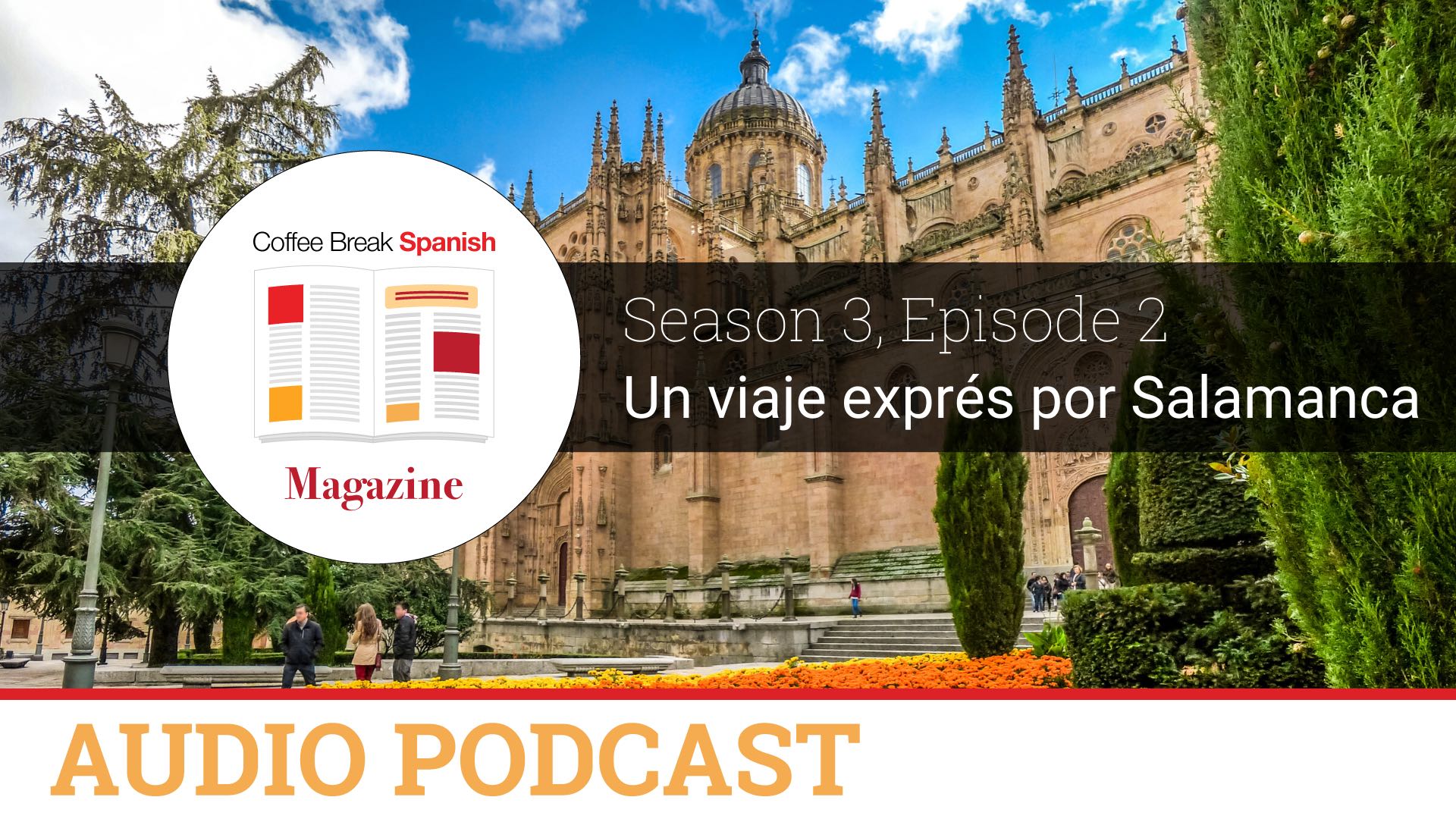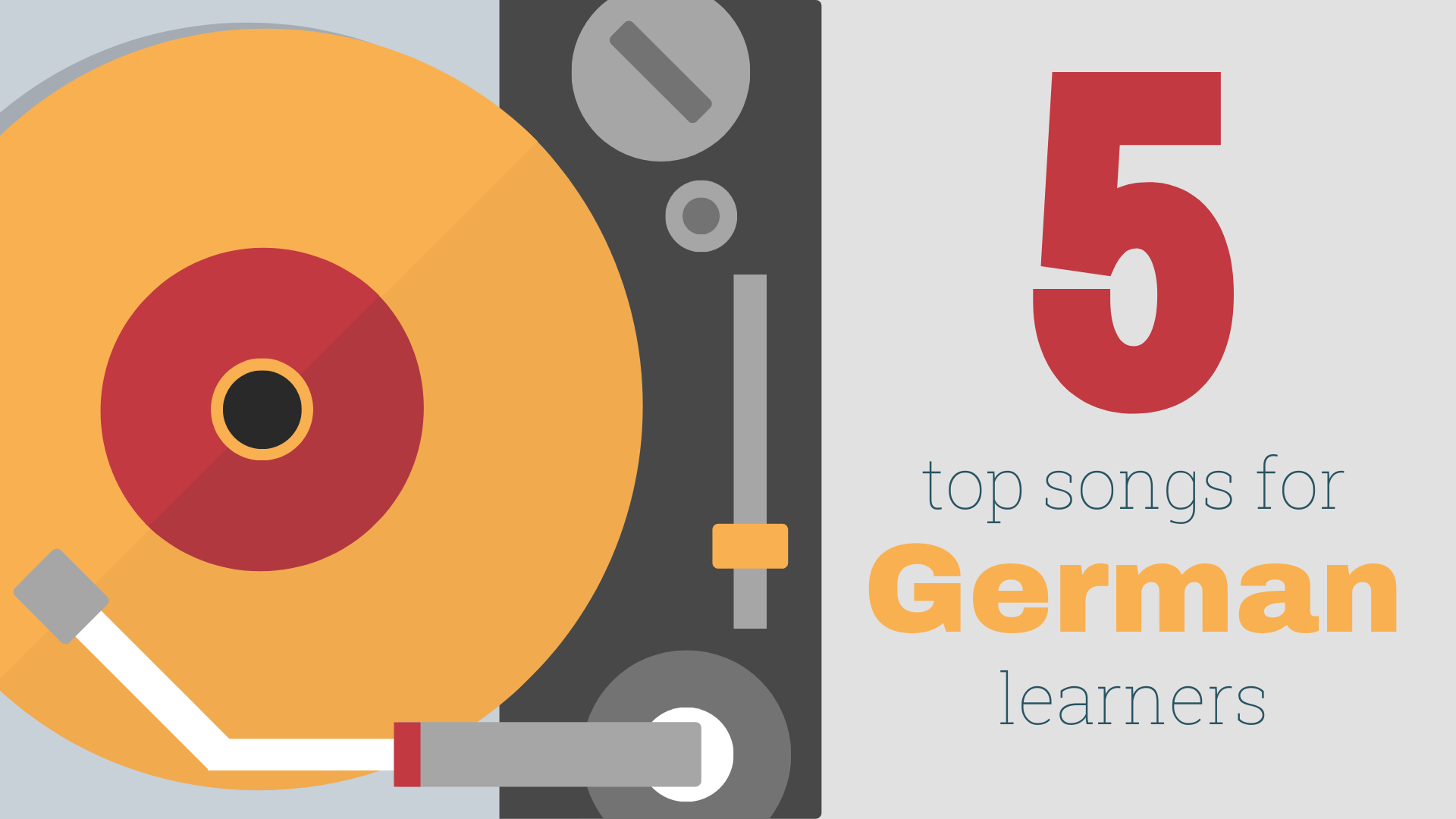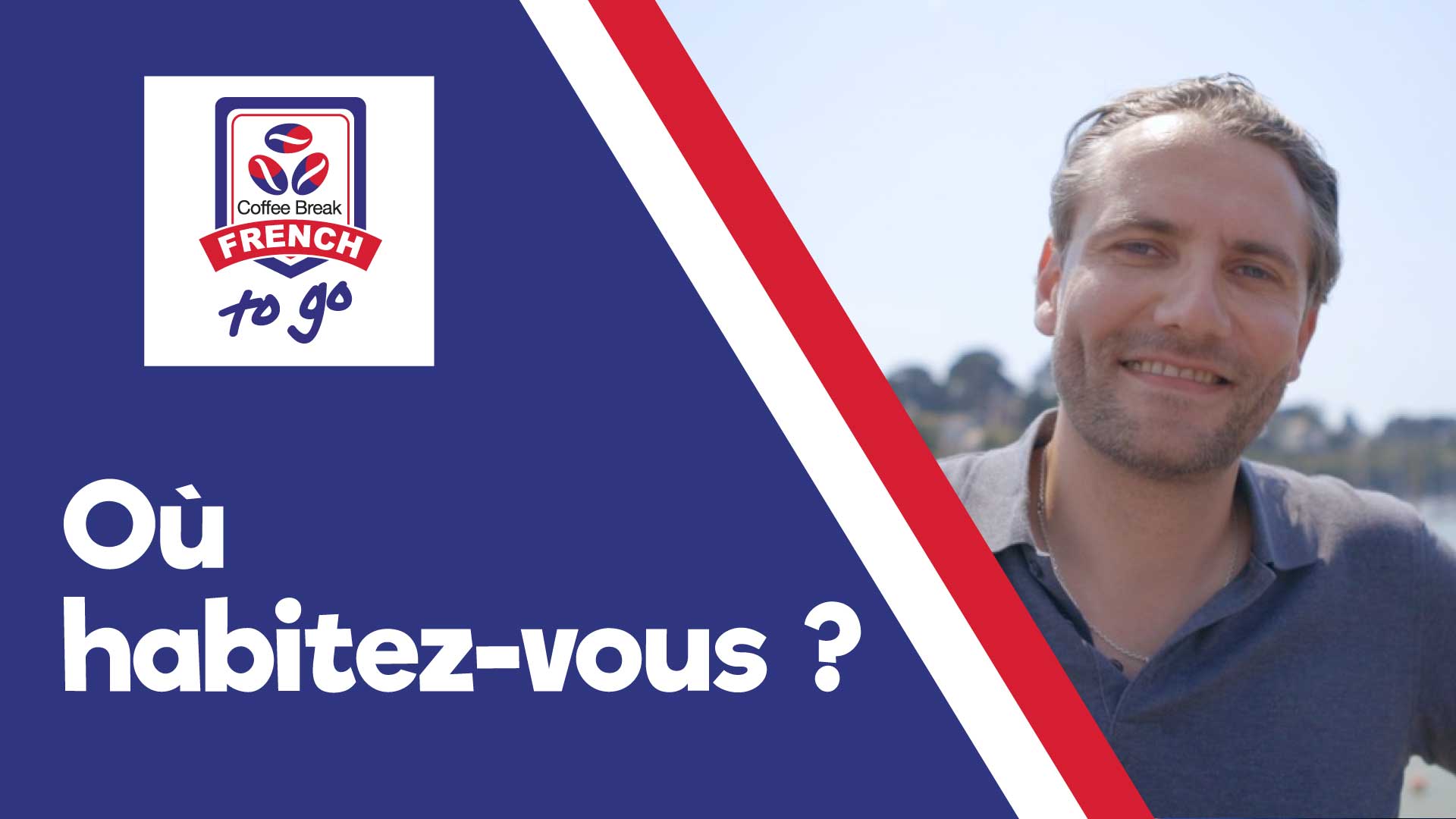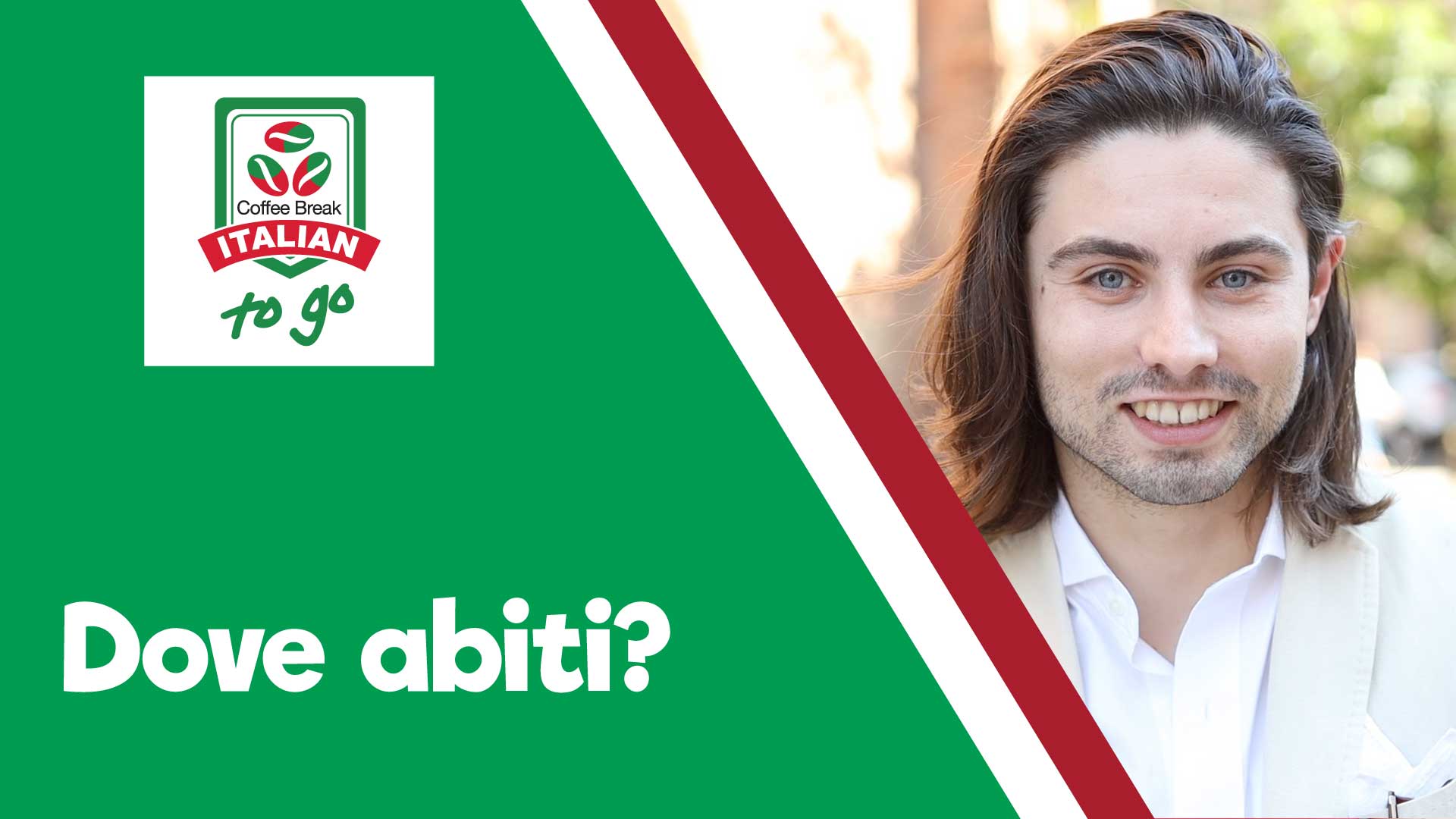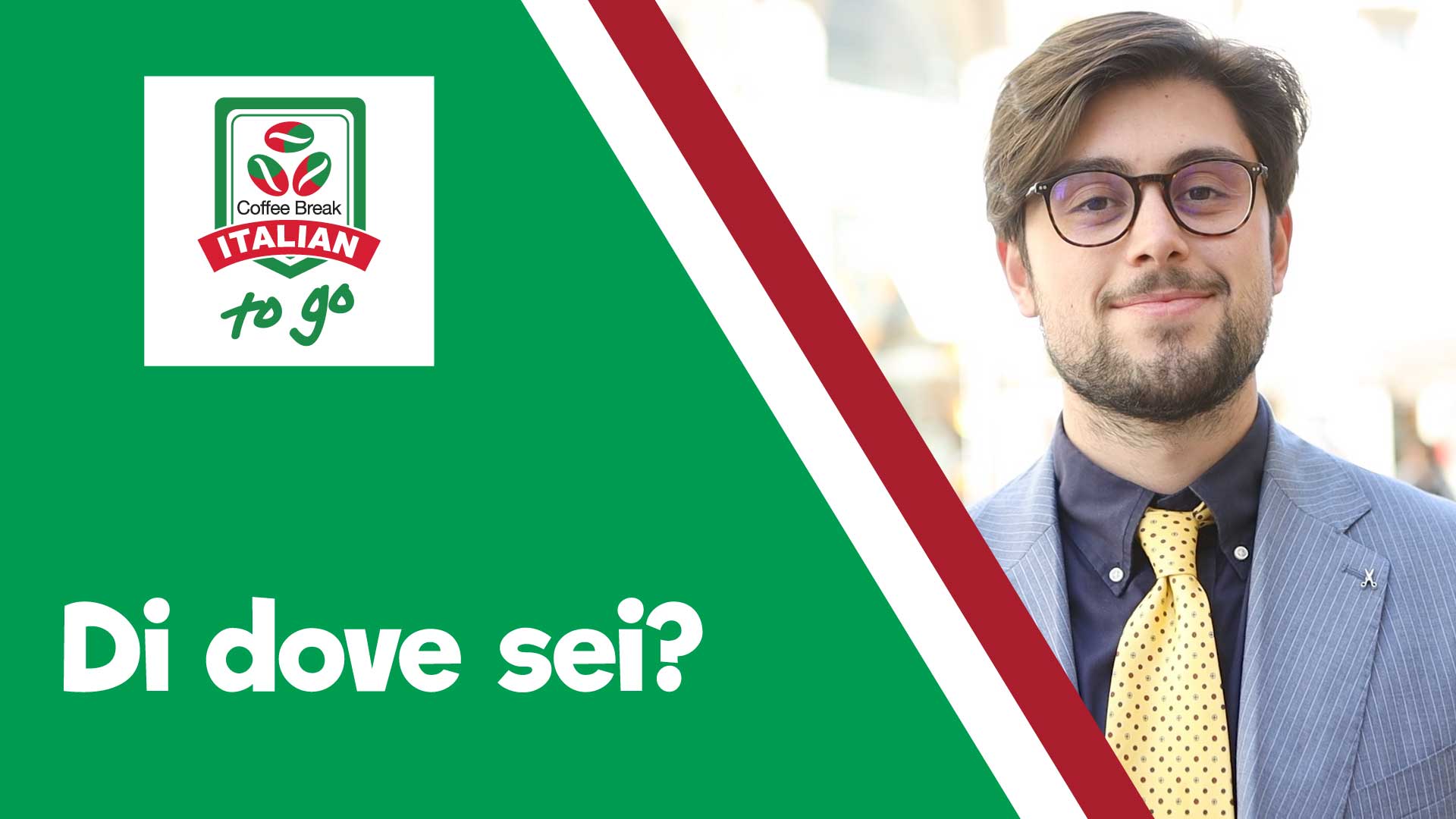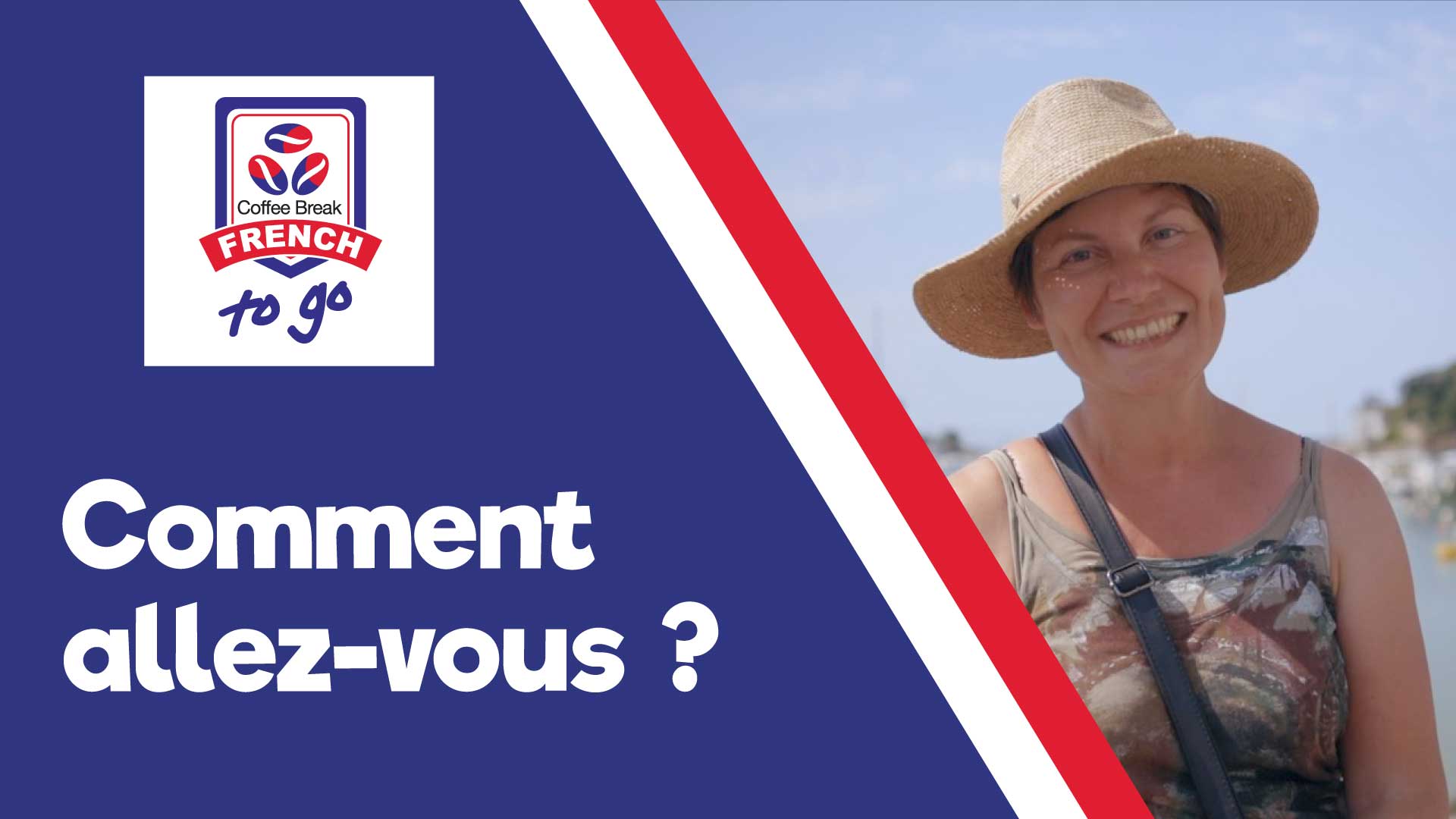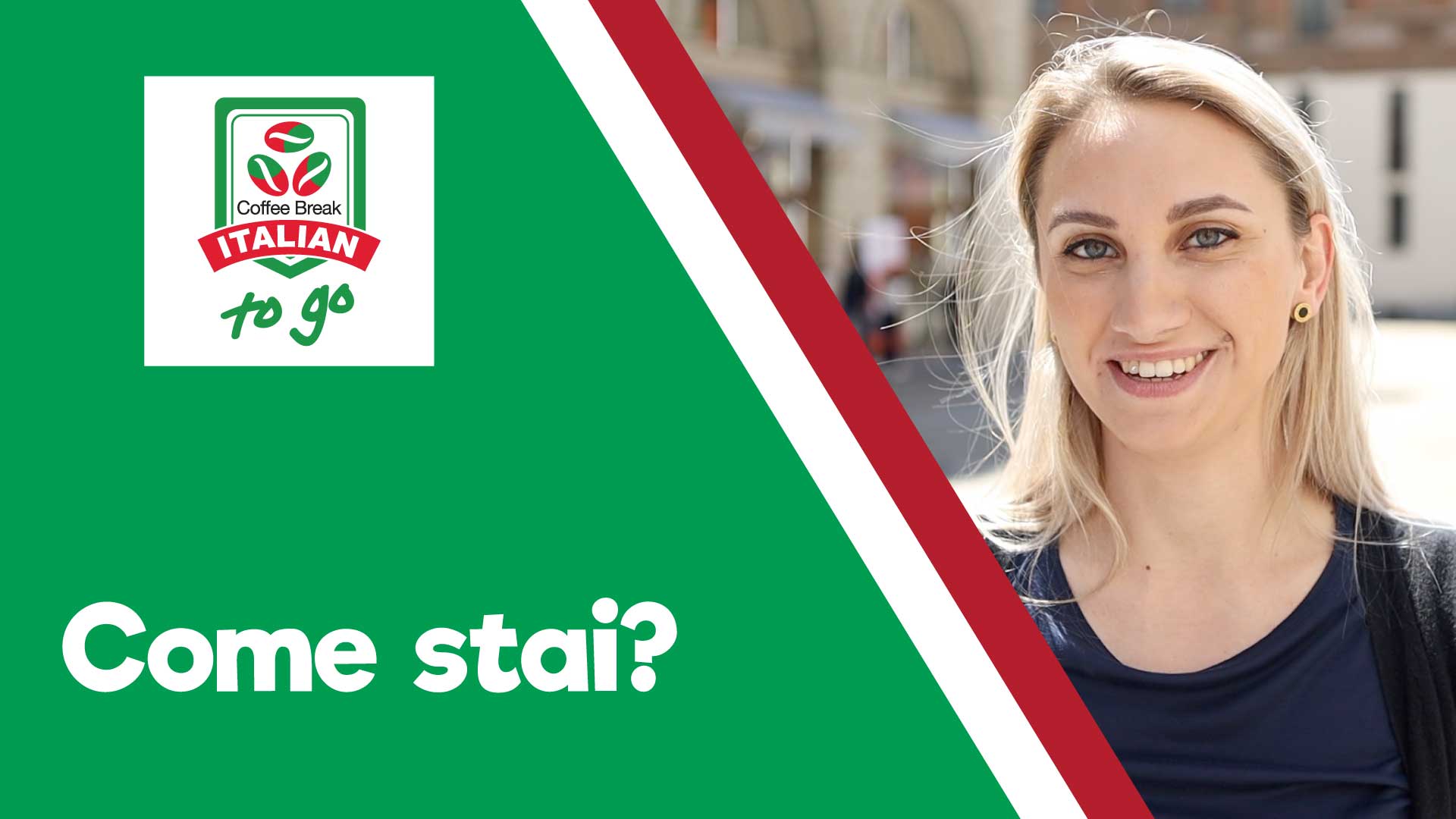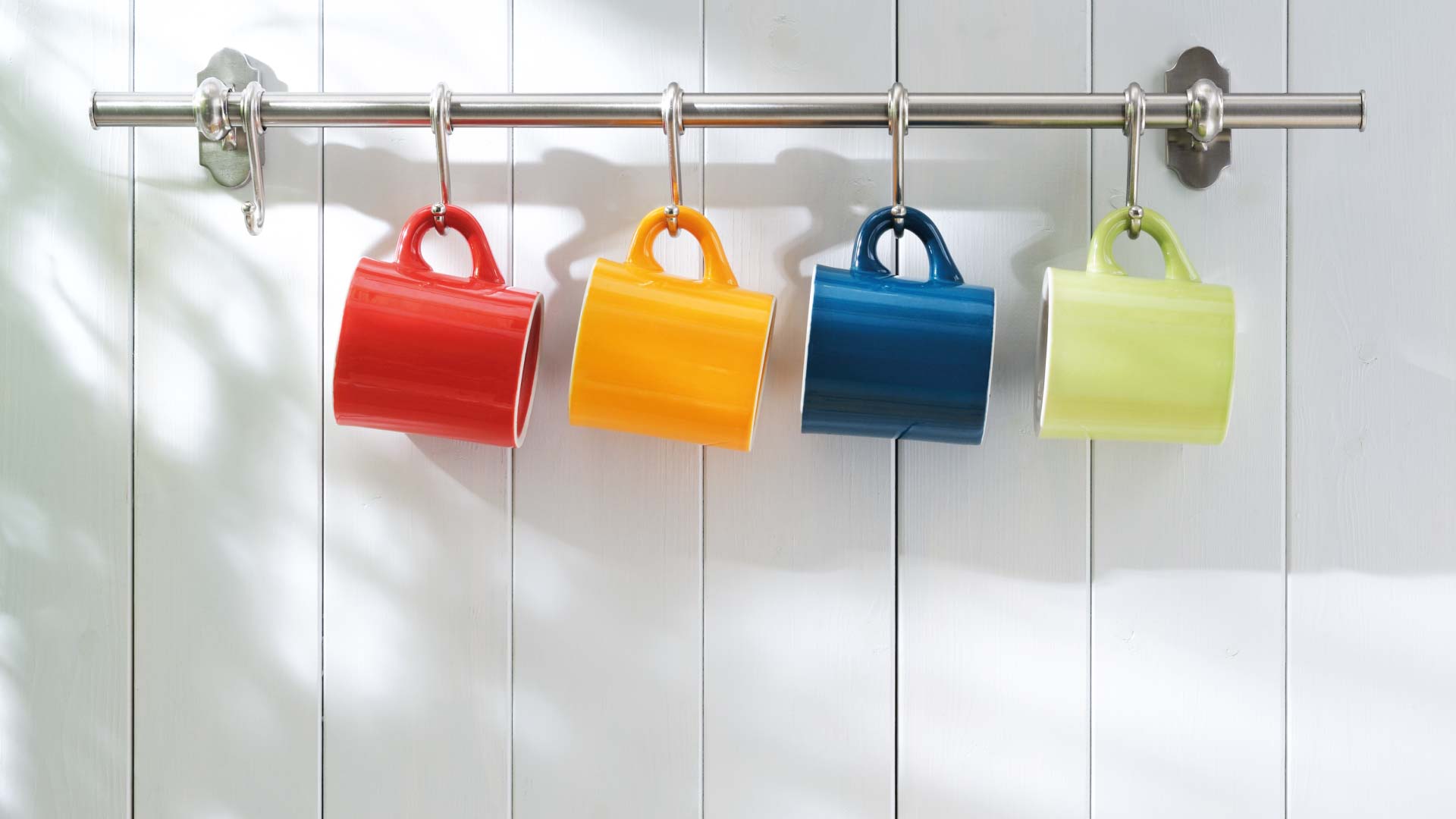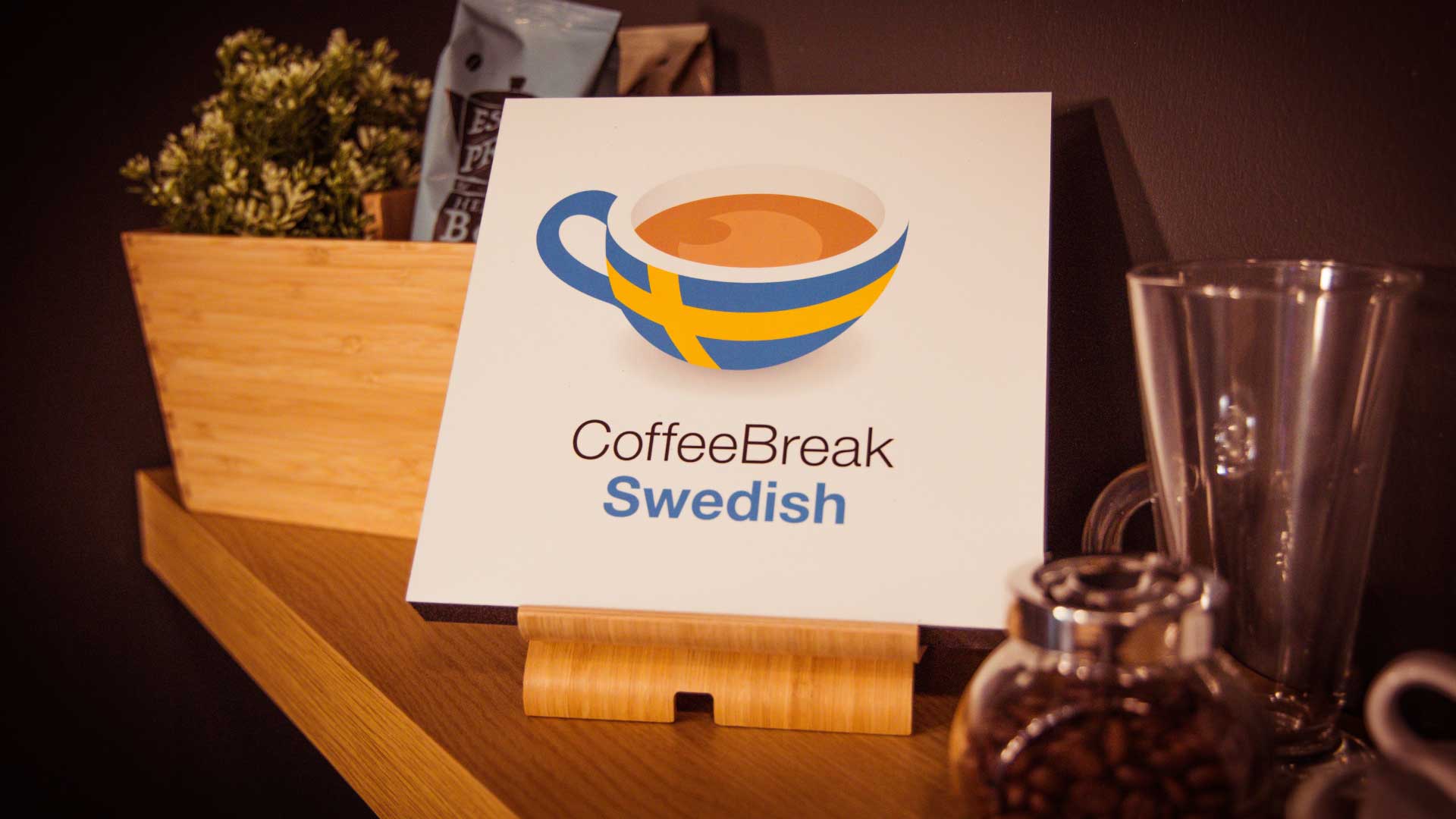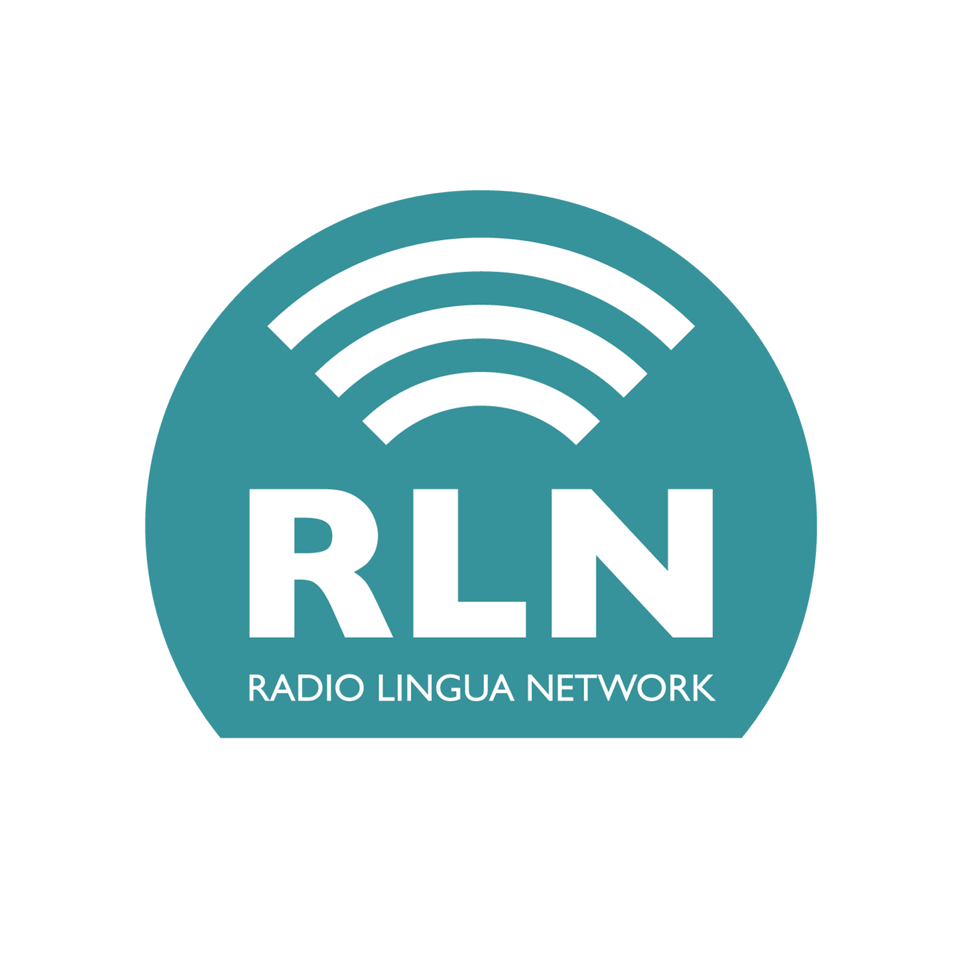In this episode of the Coffee Break Spanish Magazine we’ll be investigating an astronaut and a dragon eating ice cream on the façade of a 17th Century cathedral. There’s only one city in the Spanish-speaking world where you can see such a thing, and that is Salamanca. Join Mark, Fernanda and Anabel for a quick trip to this jewel in the crown of Castilla y León. In our grammar section we’ll be answering listener Hanne’s question about using the subjunctive after the word cuando.
Month: November 2019
5 German songs for learners
Listening to songs in the language you’re learning is an effective and enjoyable way to practise your language skills. It can help improve your listening comprehension and your pronunciation and, on top of this, music is catchy! This means that the new words, phrases and structures that you hear within a song may be easier to remember and reuse in your own speaking or writing.
Earlier this year we published a blog article titled ‘Language learning using your favourite songs’, in which we gave you our top tips for using a song to practise your language skills. But there are thousands and thousands of songs which exist throughout the German-speaking world – where do you start with finding ones to listen to which will help you practise your German? In this article, we’ve done the hard work for you! Read on to discover 5 of our recommended songs in German.
1. Griechischer Wein – Udo Jürgens, 1974
Udo Jürgens was an Austrian-Swiss singer and composer who is partly remembered for winning the Eurovision Song Contest for Austria in 1966 with the song Merci, chérie. Many consider him to have played a large role in expanding German-language pop music by bringing in influences from other genres, such as French chanson. Griechischer Wein is one of his most popular songs and versions in a number of different languages have since been recorded, including Bing Crosby’s version which he recorded during one of his last sessions, titled Come Share the Wine.
After listening to the song a few times without reading the lyrics, we recommend following the stages described in our blog article on language learning through songs (see link above). This melancholic song contains not only poetic praises about Greek wine, but is also riddled with examples of relative clauses. Look out for exemplary uses of this, for example in the lines “Kind, das seinen Vater noch nie sah” and “Musik, die fremd und südlich war”. A particularly interesting line is “Wirtshaus, aus dem das Licht noch auf den Gehsteig schien“, as this combines the relative clause with the preposition of location “aus”. We recommend studying the lyrics of the song to find other language points you have been learning about.
LINKS: Lyrics | English translation
2. Ein bißchen Frieden – Nicole, 1982
If any of you are Eurovision fans, perhaps you’ll remember Germany’s winning song from 1982, Ein bißchen Frieden, performed by 17-year-old school student, Nicole. In 2005, the European Broadcasting Union announced Ein bißchen Frieden as one of the 14 most popular Eurovision songs ever, according to the results of their Internet poll. The song was written by Ralph Siegel and Bernd Meinunger and its success led to the recording of versions of it in many different languages. The English version, A Little Peace, reached Number 1 in the UK Charts.
Listen out for similes in this song’s first verse, as they are great examples of phrases of comparison in German. Just consider “wie eine Blume” or “wie ein Feuer” and you can spot the common construction introduced by the adverb “wie”. Another grammatical feature to look out for is the recurrence of embedded clauses beginning with the word “dass”.
LINKS: Lyrics | English translation
3. 99 Luftballons – Nena, 1983
We’re sure that many of you will know the 80s hit 99 Red Balloons, which reached Number 1 in the UK and the US Charts, but have you tried listening to its original version in German? It was released in 1983 by German band Nena, who were together between 1981 and 1987. The band is very important to German musical culture, as it was part of the forming of the German New Wave scene (Neue Deutsche Welle). 99 Luftballons was a huge success across Europe, leading to the writing of the English version the year after. Unfortunately, Nena never managed to match the success of 99 Luftballons and the band broke up after the release of its fourth, final and least successful album in 1986. They reunited in 2017 for a public performance of their debut single, Nur geträumt, to mark the 40th anniversary of the band’s first appearance on stage.
The lyrics to 99 Luftballons tell the story of the release of 99 balloons. These are mistaken for UFOs and the reactions of different nations result in a destructive war breaking out. The lyrics to 99 Red Balloons aren’t an exact translation, but carry the same anti-war message.
The song contains a number of interesting language points that you may recognise. For instance, it demonstrates the differences in building the plural form of nouns. For example, the words “Kriegsminister” and “Düsenjäger” remain in the same form when made plural. On the other hand, the nouns “Luftballons” and “Jahre” change in their plural form. Another interesting point is the omission of the personal pronoun in sentences like “Hab’ nen Luftballon gefunden”. This song is also good practice for your numbers in German! Before you look at the lyrics, see if you can count how many times you hear her sing “neunundneunzig” (“ninety-nine”).
LINKS: Lyrics | English translation
4. Mensch – Herbert Grönemeyer, 2002
Our next song is the title track of Germany’s best-selling album of all time. Mensch sold over 3 million copies in Germany and thanks to this success and the popularity of his fifth album, 4630 Bochum (1984), Herbert Grönemeyer is often considered one of the most successful German artists.
One prominent language feature of this song is the frequent use of the conjunction “und”. In German, this word is often added to form sentences with multiple dependent clauses. Also, listen out for examples of compound words, such as “Sonnenzeit” or “ozeanblau”.
LINKS: Lyrics | English translation
5. Der perfekte Moment… wird heut verpennt – Max Raabe, 2017
Our final song recommendation comes from an artist with a very interesting musical style. Max Raabe founded his Berlin-based Palast Orchester with fellow students in the mid 1980s, while studying opera in Berlin. Together, Raabe and Palast Orchester perform covers of cabaret songs from the Weimar period as well as original songs that merge 1920s and 30s melodies with modern lyrics. As well as this, they have recorded some covers of modern pop songs in a 1920-30s style, including Britney Spears’ Oops!… I Did It Again! The title track of their most recent album, Der perfekte Moment… wird heut verpennt, is a good song for German learners wanting to practise their listening comprehension, where Raabe sings in nice, clear German.
As you’re listening, it is particularly interesting to take a look at all the idioms the song contains. Most of them are used to describe that the singer will not do anything today, for example, “Heut’ mach’ ich gar nichts/Keinen Finger krumm”. “Was ich heut’ besorgen kann” is especially interesting, because it is a play on the original saying “Was ich heut’ kann besorgen, verschieb’ ich nicht auf morgen”.
LINKS: Lyrics | English translation
We hope this article has given you a useful introduction to just a tiny proportion of the huge variety of German music which is out there. One of the songs we have chosen, 99 Luftballons, is already included in our Tune for Tuesday playlist. This is a feature that we introduced earlier this year. Every Tuesday we add another song with the aim of building up a playlist of songs from all over the world and in many different languages to help you develop your language skills and introduce you to some new styles of music. We are going to add these five songs to our new playlist, Tune for Tuesday – German, which will contain only songs in German. You can find this playlist on YouTube and on Spotify by clicking on the links below. And remember to keep up to date with Tune for Tuesday by searching for Coffee Break Languages and Coffee Break German on Facebook.
Tune for Tuesday – German: YouTube playlist | Spotify playlist
What songs in German do you already know and love? Feel free to share some of your favourites with us in the comments to help other German learners discover them!
Où habites-tu ? / Où habitez-vous ? – “Where do you live?” – Coffee Break French To Go Episode 3
To say “I live in…” in French you say j’habite à… . In this episode of Coffee Break French To Go, Pierre-Benoît asks the question, où habites-tu ? (informal) or où habitez-vous ? (formal). You can use the answers of our interviewees to help you learn to say where you’re from in French.
In the first part of the video, watch the interviews without subtitles and try to understand. In the second part of the video, we’ve provided subtitles in French at the top of the screen. You can choose to turn on subtitles in English using the Subtitles/CC button.
In this first series of Coffee Break French To Go, Pierre-Benoît is in the town of Pornic, in the west of France, and in each episode she’ll ask passers-by one question. Of course, that one question will result in many answers, and it’s through these answers that you can practise your French and build your vocabulary.
Coffee Break French To Go will be published every two weeks here on YouTube, and each Season will be filmed in a different part of the French-speaking world.
If you’d prefer not to wait for all 10 lessons of Season 1 to be published, you can access downloadable versions of the videos along with audio versions and lesson notes / transcripts in the Coffee Break Academy.
Coffee Break French To Go is based on the popular podcast series and online course Coffee Break French. For access to the free podcasts, please click here.
To purchase our full online courses on the Coffee Break Academy, click here.
Dove abiti? / Dove abita? – “Where do you live?” – Coffee Break Italian To Go Episode 3
In this episode of Coffee Break Italian To Go, Francesca asks the question, dove abiti (informal) or dove abita (formal). You can use the answers of our interviewees to help you learn to say where you’re from in Italian.
In the first part of the video, watch the interviews without subtitles and try to understand. In the second part of the video, we’ve provided subtitles in Italian at the top of the screen. You can choose to turn on subtitles in English using the Subtitles/CC button.
In this first series of Coffee Break Italian To Go, Francesca is in the town of Milan, in the north of Italy, and in each episode she’ll ask passers-by one question. Of course, that one question will result in many answers, and it’s through these answers that you can practise your Italian and build your vocabulary.
Coffee Break Italian To Go will be published every two weeks here on YouTube, and each Season will be filmed in a different part of the Italian-speaking world.
If you’d prefer not to wait for all 10 lessons of Season 1 to be published, you can access downloadable versions of the videos along with audio versions and lesson notes / transcripts in the Coffee Break Academy.
Coffee Break Italian To Go is based on the popular podcast series and online course Coffee Break Italian. For access to the free podcasts, please click here.
To purchase our full online courses on the Coffee Break Academy, click here.
TFT: Hùg air a’ bhonaid mhòir
This Saturday 30th November is Saint Andrew’s Day, the official national day of Scotland. That’s why this week we’re bringing you a Tune for Tuesday from Coffee Break Languages’ home country. Hùg air a’ bhonaid mhòir is a song in Scots Gaelic by Julie Fowlis, a folk singer and instrumentalist from the Scottish Outer Hebrides. You may recognise her voice from the soundtrack to the 2012 Disney-Pixar film Brave. Listen out for the off-beat, syncopated rhythms and repetition throughout the song, distinctive of Scottish folk music.
If you’re interested in learning some Gaelic, you can check out our One Minute Gaelic course by clicking here. And let us know what you think of Hùg air a’ bhonaid mhòir in the comments below. What other Scottish artists do you know and like?
To keep discovering songs from around the world, you can follow our Spotify and YouTube playlists, which can be found by scrolling down the page.
CBG Mag 1.07 | Entdecke die Bremer Stadtmusikanten
Have you heard the one about the donkey, the dog, the cat and the rooster? In this episode of the Coffee Break German Magazine we’re finding out about the famous Town Musicians of Bremen. First published in Grimms’ Fairy Tales in 1819, Die Bremer Stadmusikanten has become a key part of the cultural legacy of the German-speaking world. We’ll also hear from listener Nick who wants to know more about the small but versatile word doch, and Olivera is back with another long German word.
5 Spanish songs for learners
Listening to songs in the language you’re learning is an effective and enjoyable way to practise your language skills. It can help improve your listening comprehension and your pronunciation and, on top of this, music is catchy! This means that the new words, phrases and structures that you hear within a song may be easier to remember and reuse in your own speaking or writing.
Earlier this year we published a blog article titled ‘Language learning using your favourite songs’, in which we gave you our top tips for using a song to practise your language skills. But there are thousands and thousands of songs which exist throughout the Spanish-speaking world – where do you start with finding ones to listen to which will help you practise your Spanish? In this article, we’ve done the hard work for you! Read on to discover 5 of our recommended songs in Spanish.
1. ¡Y viva España! – Manolo Escobar, 1973
Our first song was actually written by a Belgian composer and Belgian lyricist, Leo Caerts and Leo Rozenstraten, and started out as Eviva España, a song about holidaying in Spain, imitating the Spanish pasodoble musical style (the name given to a style of Spanish dance and music often played during bullfights). It seems that the meaning behind “Eviva” in the title is unknown, but when the song was translated into Spanish, this became “Y viva”. Manolo Escobar’s 1973 recording of the Spanish version of the song was extremely successful. Escobar was a very well-known singer, actor and performer of Andalusian copla, a style of Spanish popular song. He began his career in a band with four of his brothers, called Manolo Escobar y sus guitarras.
After listening to the song a few times without reading the lyrics, we recommend following the stages described in our blog article on language learning through songs (see link above). There are many interesting language points to listen out for in this song. Don’t worry if there are some words you don’t recognise, as there are a few unusual pieces of vocabulary, for example, “fandanguillos y alegrías” are styles of Spanish music and dance. Listen out for the many different verb tenses used in the lyrics, including the line which uses both the present perfect and the future tense, “España siempre ha sido y será…” (“Spain has always been and always will be…”). And, of course, you may quickly notice the repeated subjunctive in the chorus “Que viva España” (“Long live Spain”), as this is expressing a desire that something will happen. If you’d like a reminder of how to use the subjunctive in Spanish and some common subjunctive triggers, have a listen to Coffee Break Spanish Season 3 Episode 39.
LINKS: Lyrics | English translation
https://www.youtube.com/watch?v=2ygLHsAEfTc
2. La Puerta de Alcalá – Ana Belén & Víctor Manuel, 1986
If you have ever visited Madrid, it is likely that the title of this next song will conjure up images of Madrid’s famous monument of the same name. Inaugurated in 1769, La Puerta de Alcalá is often associated with similar Roman arches such as the Arc de Triomphe and the Brandenburg Gate. Over 200 years later, La Puerta de Alcalá, the song, was written by Bernardo Fuster, Luis Mendo, Miguel Ángel Campos and Francisco Villar, to be performed by Ana Belén and Víctor Manuel. These two Spanish singers were married in 1972 and are often considered symbols of the Spanish Transition to Democracy, with many of their songs expressing strong social and political opinions. Their recording of La Puerta de Alcalá stayed at Number 1 in the Spanish charts for seven weeks and it remains an important song for many Madrileños because of its link with the monument.
The lyrics are interesting, as they contain several more complex phrases, and each verse of the song refers to a different sociopolitical event that has affected Madrid and its famous monument. Amongst the many language points to look out for within the lyrics, listen out for the refrain “Ahí está, la Puerta de Alcalá” (“There it is, La Puerta de Alcalá”). You can remember this line as a good example of using estar rather than ser to describe the position of something. Learn more about when to use ser and estar in Coffee Break Spanish Season 2 Episode 6.
LINKS: Lyrics | English translation
3. En el muelle de San Blás – Maná, 1997
Our next song comes from a Mexican pop rock group formed in 1986, whose name, Maná, comes from the Polynesian term for supernatural energy. They have won 4 Grammy Awards and are extremely popular throughout Latin America and further afield.
Their song En el muelle de San Blás tells the story of Rebeca Méndez Jiménez, who is said to have waited at the pier of San Blás, on the Pacific coast of Mexico, for 41 years for her husband to return from a fishing trip. It is thought that he tragically got caught in a storm out at sea and never returned. One day, she was noticed by Fher Olvera, the lead singer of Maná, who listened to her story and decided to write the song.
The lyrics are a good challenge for your Spanish comprehension, so we recommend reading them as you listen to the song another time so that you can fully understand the story being told. They also contain many examples of the preterite and the imperfect tenses. You may like to find some of these in the text and think about why that particular tense has been used in that situation. To learn more about when to use these two tenses, join Mark and Kara in Coffee Break Spanish Season 2 Episode 20.
LINKS: Lyrics | English translation
4. Color esperanza – Diego Torres, 2001
Born in Buenos Aires, Diego Torres is a singer, songwriter, actor and musician who is well known throughout Latin America, the United States and Spain. He is also known for being the son of famous Argentinian film actress, Lolita Torres. His uplifting song, Color esperanza, focuses on hope. In 2003, Torres gave a special performance of it in order to welcome Pope John Paul II to Cuatro Vientos Airport in Madrid.
Torres sings quite clearly and the lyrics aren’t too complex and, of course, contain many examples of language points you have been learning about. For example, note the interesting phrase in the chorus, “Saber que se puede, querer que se pueda”, which can be used to compare the use of the indicative and the subjunctive. This would be a good example to memorise, to help you remember the structures “saber que + infinitive” and “querer que + subjunctive”.
LINKS: Lyrics | English translation
5. El mismo sol – Alvaro Soler, 2015
This last song was one of the hits of summer 2015 in Spain and across Europe. El mismo sol is the debut single of Spanish-German singer, Alvaro Soler. Following the success of the song, there are now various recordings of it. Soler collaborated with Jennifer Lopez to create a version with the addition of her vocals, and a version in Spanglish, El Mismo Sol (Under The Same Sun), with some lyrics in English.
The lyrics to this positive, upbeat song focus on the idea of a united world where “no hay fronteras” (“there are no borders”) and where “todos estamos bajo el mismo sol” (“we are all under the same sun”). And also, luckily for us, they are sung nice and clearly! We recommend reading the lyrics and trying to find some useful examples of the language points you have been studying. For example, note the double subjunctive in the first line of the chorus, “Yo quiero que este sea el mundo que conteste”.
We’d also like to take a moment to admire Soler’s impressive number of languages. It is said that he speaks Catalan, Spanish, German, English, Italian, French and Japanese!
LINKS: Lyrics | English translation
We hope this article has given you a useful introduction to just a tiny proportion of the huge variety of Spanish-language music which is out there, across the whole Spanish-speaking world. Two of the songs we have chosen, La Puerta de Alcalá and En el muelle de San Blás, are already included in our Tune for Tuesday playlist. This is a feature that we introduced earlier this year. Every Tuesday we add another song with the aim of building up a playlist of songs from all over the world and in many different languages to help you develop your language skills and introduce you to some new styles of music. We are going to add these five songs to our new playlist, Tune for Tuesday – Spanish, which will contain only songs in Spanish. You can find this playlist on YouTube and on Spotify by clicking on the links below. And remember to keep up to date with Tune for Tuesday by searching for Coffee Break Languages and Coffee Break Spanish on Facebook.
Tune for Tuesday – Spanish: YouTube playlist | Spotify playlist
What songs in Spanish do you already know and love? Feel free to share some of your favourites with us in the comments to help other Spanish learners discover them!
D’où viens-tu ? / D’où venez-vous ? – “Where are you from?” – Coffee Break French To Go Episode 2
To ask “how are you?” in French you can say d’où viens-tu ?, or in a more formal situation, d’où venez-vous ?. In this episode of Coffee Break French To Go, Pierre-Benoît asks this question to passers-by in the streets of his hometown, Pornic. You can use the answers of our interviewees to help you learn to introduce yourself in French.
In the first part of the video, watch the interviews without subtitles and try to understand. In the second part of the video, we’ve provided subtitles in French at the top of the screen. You can choose to turn on subtitles in English using the Subtitles/CC button.
In this first series of Coffee Break French To Go, Pierre-Benoît is in the town of Pornic, in the west of France, and in each episode he’ll ask passers-by one question. Of course, that one question will result in many answers, and it’s through these answers that you can practise your French and build your vocabulary.
Coffee Break French To Go will be published every two weeks here on YouTube, and each Season will be filmed in a different part of the French-speaking world.
If you’d prefer not to wait for all 10 lessons of Season 1 to be published, you can access downloadable versions of the videos along with audio versions and lesson notes / transcripts in the Coffee Break Academy.
Coffee Break French To Go is based on the popular podcast series and online course Coffee Break French. For access to the free podcasts, please click here.
To purchase our full online courses on the Coffee Break Academy, click here.
Di dove sei? / Di dov’é? – “Where are you from?” – Coffee Break Italian To Go Episode 2
In this episode of Coffee Break Italian To Go, Franceca asks the question, di dove sei? (informal) or di dov’è? (formal) to passers-by in the streets of Milan. You can use the answers of our interviewees to help you learn to say where you’re from in Italian.
In the first part of the video, watch the interviews without subtitles and try to understand. In the second part of the video, we’ve provided subtitles in Italian at the top of the screen. You can choose to turn on subtitles in English using the Subtitles/CC button.
In this first series of Coffee Break Italian To Go, Francesca is in the town of Milan, in the north of Italy, and in each episode she’ll ask passers-by one question. Of course, that one question will result in many answers, and it’s through these answers that you can practise your Italian and build your vocabulary.
Coffee Break Italian To Go will be published every two weeks here on YouTube, and each Season will be filmed in a different part of the Italian-speaking world.
If you’d prefer not to wait for all 10 lessons of Season 1 to be published, you can access downloadable versions of the videos along with audio versions and lesson notes / transcripts in the Coffee Break Academy.
Coffee Break Italian To Go is based on the popular podcast series and online course Coffee Break Italian. For access to the free podcasts, please click here.
To purchase our full online courses on the Coffee Break Academy, click here.
TFT: Bailando
¡Hola amigos! We’re sure that many of you will already known the artist of today’s Tune for Tuesday. Today we’re listening to Bailando which was written and recorded by Enrique Iglesias and Cuban artists Descemer Bueno and Gente de Zona in 2014. The song topped the charts all over Latin America, in Spain and in many other European countries, but was not so successful in the UK and Ireland. It was also the theme music of the telenovela (soap opera) Reina de corazones (Queen of Hearts). The music video, which you can watch by scrolling down, was filmed in Santa Domingo in the Dominican Republic and was the first Spanish-language music video to reach over 1 billion views. Several other versions of the song have since been recorded, including a Spanglish version featuring Jamaican singer, Sean Paul.
If you’re a Coffee Break Spanish listener, you may have already noticed that the song’s title, Bailando, is an example of the present continuous tense, which can be translated into English as ‘dancing’. Why not see if you can find some of the other examples of this tense in the lyrics? If you need some help, you can find the lyrics online by clicking here, or if you’d like to hear the song played more slowly, we recommend watching the YouTube video below and selecting a slower playback speed by clicking on the settings symbol.
We hope you enjoy practising your Spanish comprehension with this song, and remember to check out our full Tune for Tuesday playlist by scrolling down.
CBS Mag 3.01 | El fútbol – en el corazón de todos los latinos
In this first episode in our new season of the Coffee Break Spanish Magazine, join Fernanda, Sofía and Mark as they discuss a topic close to every Latin American’s heart: el fútbol. There’s a question from listener Lonneke about the different verbs for “to walk”, and Sofía provides us with some useful words and phrases associated with football.
5 French songs for learners
Listening to songs in the language you’re learning is an effective and enjoyable way to practise your language skills. It can help improve your listening comprehension and your pronunciation and, on top of this, music is catchy! This means that the new words, phrases and structures that you hear within a song may be easier to remember and reuse in your own speaking or writing.
Earlier this year we published a blog article titled ‘Language learning using your favourite songs’, in which we gave you our top tips for using a song to practise your language skills. But there are thousands and thousands of songs which exist throughout the French-speaking world – where do you start with finding ones to listen to which will help you practise your French? In this article, we’ve done the hard work for you! Read on to discover our 5 recommended songs in French.
1. À la claire fontaine – traditional French song
We’ll start with a song which may be the first that many French children ever heard. À la claire fontaine is a very well-known traditional French song. It is thought that this comptine (nursery rhyme) dates back to the early 17th Century, when it was sung both in France and in what was later to become Quebec, as French settlers were arriving in Canada.
After listening to the song a few times without looking at the lyrics, we recommend following the stages described in our blog article on language learning through songs (see link above). À la claire fontaine is very useful for French learners, as it contains many different verb tenses, including the passé composé, the imperfect, the future and even the imperfect subjunctive – “fût” in the final verse is the third person singular form of être in the imperfect subjunctive. We’d recommend trying to spot all the tenses you know while reading the lyrics and to help you with any comprehension problems, take a look at an English translation of the text.
LINKS: Lyrics | English translation
2. La mer – Charles Trenet, 1946
We’re sure that many of you will be familiar with this very famous song, which was originally recorded by Roland Gerbeau in 1945 but was made famous by the great Charles Trenet in 1946. Trenet was a very popular French singer-songwriter whose career lasted from the 1930s to the 1990s. Following his recording of La mer, it was translated into many different languages, including, as many of you will know, English (titled Beyond the Sea).
Listen to the song without reading the lyrics first, then we recommend looking at the lyrics and studying them like you would if they were any other reading text: look up new words you don’t know and try to spot specific language points you have been studying. La mer is especially useful for practising adjectives. Take a moment to consider which adjectives precede the noun and which come after it, and note how the adjectives change depending on whether the noun it’s describing is masculine or feminine and singular or plural. For example, compare “ces grands roseaux mouillés” and “ces maisons rouillées”. If you’d like to recap adjective agreement and positioning, join Mark and Anna in Coffee Break French Season 2 Episode 9.
LINKS: Lyrics | English translation
3. Tous les garçons et les filles – Françoise Hardy, 1962
It is generally thought that Françoise Hardy stood out from the crowd amongst the 1960s French yé-yé pop singers due to the fact that she wrote her own songs and went on to influence the likes of Mick Jagger and Bob Dylan. She rose straight to the top of the charts at the age of 18 with her first record Tous les garçons et les filles, which describes a young person watching with envy the couples around her when she has never known love herself. Hardy later recorded the song in Italian (Quelli della mia età) and in English (Find Me a Boy).
And, luckily for us, the vocabulary used in the lyrics isn’t too tricky, so have a listen and see how much you can understand. As always, listen out for examples of the language points you have been learning about. For example, if you are familiar with the word personne, used to mean ‘no one’, listen out for the repeated phrase “personne ne m’aime”, meaning “no one loves me”.
LINKS: Lyrics | English translation
4. Je reviendrai à Montréal – Robert Charlebois, 1976
Je reviendrai à Montréal is one of the most famous songs of musician, composer, author and actor, Robert Charlebois. Originally from Montreal, Quebec, he is thought to have been hugely influential in the development of music both in Quebec and throughout the francophone world, and in 1999 he was made an Officer of the Order of Canada.
The lyrics of some of his songs include many specifically québécois words, which makes them very interesting, but if you try listening to them don’t worry if you struggle to understand what he is singing about! The lyrics of Je reviendrai à Montréal, however, are in a much more standard, universal French. Look out for the example of the future tense in the title and repeated throughout the song, “je reviendrai”, meaning “I will come back”. There are also several uses of avoir besoin de + infinitive/noun, for example, “j’ai besoin de sentir le froid” (“I need to feel the cold”) and “j’ai besoin de cette lumière” (“I need that light”) and an example of the subjunctive trigger sans que + subjunctive. To learn more about the subjunctive and other subjunctive triggers, listen to Coffee Break French Season 3 Episode 16.
LINKS: Lyrics | English translation
5. Papaoutai – Stromae, 2013
We’re sure that many of you will already know Stromae, Belgian rapper and singer-songwriter whose songs have been a huge success across much of Europe. Paul Van Haver originally chose Opsmaestro as his stage name, but then changed it to Stromae. This name comes from the word maestro and is an example of verlan, a type of French slang which involves swapping round the syllables of a word (mae-stro → stro-mae). His song Papaoutai, Belgium’s best selling single of 2013, refers to the absence of Stromae’s father, Pierre Rutare, during his childhood, before Rutare was killed in the 1994 Rwandan genocide. The title comes from “Papa où t’es ?” (“Dad, where are you?”).
The lyrics contain many examples of different verb tenses, use of the pronouns y and en and many more language points you can look out for. Also note how the repeated question in the chorus “où t’es ?” combines tu and es to make “t’es”, which is very common in informal, spoken French.
LINKS: Lyrics | English translation
We hope this article has given you a useful introduction to just a tiny proportion of the huge variety of French music which is out there, across the whole francophone world. Two of the songs we have chosen, La mer and Papaoutai, are already included in our Tune for Tuesday playlist. This is a feature that we introduced earlier this year. Every Tuesday we add another song to it, with the aim of building up a playlist of songs from all over the world and in many different languages to help you develop your language skills and introduce you to some new styles of music. We are going to add these five songs to our new playlist, Tune for Tuesday – French, which will contain only songs in French. You can find this playlist on YouTube and on Spotify by clicking on the links below. And remember to keep up to date with Tune for Tuesday by searching for Coffee Break Languages and Coffee Break French on Facebook.
Tune for Tuesday – French: YouTube playlist | Spotify playlist
What songs in French do you already know and love? Feel free to share some of your favourites with us in the comments to help other French learners discover them!
Comment vas-tu ? / Comment allez-vous ? – “How are you?” – Coffee Break French To Go Episode 1
To ask “how are you” in French you can say comment vas-tu ? or, more formally comment allez-vous ?. In this episode of Coffee Break French To Go, Pierre-Benoît asks the question to passers-by in the streets of his hometown, Pornic. You can use the answers of our interviewees to help you learn to answer this question yourself.
In the first part of the video, watch the interviews without subtitles and try to understand. In the second part of the video, we’ve provided subtitles in French at the top of the screen. You can choose to turn on subtitles in English using the Subtitles/CC button.
In our first series, Pierre-Benoît is in the town of Pornic, in the west of France, and in each episode he’ll ask passers-by one question. Of course, that one question will result in many answers, and it’s through these answers that you can practise your French and build your vocabulary.
If you’d prefer not to wait for all 10 lessons of Season 1 to be published, you can access downloadable versions of the videos along with audio versions and lesson notes / transcripts in the Coffee Break Academy.
Coffee Break French To Go is based on the popular podcast series and online course Coffee Break French. For access to the free podcasts, please click here.
To purchase our full online courses on the Coffee Break Academy, click here.
Come stai? / Come sta? – “How are you?” – Coffee Break Italian To Go Episode 1
To ask “how are you?” in Italian you can say come stai?, or in a more formal situation, come sta? In this episode of Coffee Break Italian To Go, Francesca asks this question to passers-by in the streets of Milan. You can use the answers of our interviewees to help you learn to introduce yourself in Italian.
In the first part of the video, watch the interviews without subtitles and try to understand. In the second part of the video, we’ve provided subtitles in Italian at the top of the screen. You can choose to turn on subtitles in English using the Subtitles/CC button.
In this first series of Coffee Break Italian To Go, Francesca is in the town of Milan, in the north of Italy, and in each episode she’ll ask passers-by one question. Of course, that one question will result in many answers, and it’s through these answers that you can practise your Italian and build your vocabulary.
Coffee Break Italian To Go will be published every two weeks here on YouTube, and each Season will be filmed in a different part of the Italian-speaking world.
If you’d prefer not to wait for all 10 lessons of Season 1 to be published, you can access downloadable versions of the videos along with audio versions and lesson notes / transcripts in the Coffee Break Academy.
Coffee Break Italian To Go is based on the popular podcast series and online course Coffee Break Italian. For access to the free podcasts, please click here.
To purchase our full online courses on the Coffee Break Academy, click here.
TFT: C’est écrit
Do you already know any songs by Francis Cabrel? The iconic sound of his acoustic guitar in his songs such as Petite Marie, La corrida and Je l’aime à mourir has made them well-loved by many across the French-speaking world, and he is generally considered to have been an extremely influential figure in the development of popular music in France. After winning a competition for French singer-songwriters in 1974, at the age of 21, he released his first album, Les murs de poussière in 1977. His music is usually described as folk, occasionally with blues and country influences. As today’s Tune for Tuesday, we’ve chosen his beautiful 1989 single, C’est écrit.
If you’re a Coffee Break French learner, listen out for the many examples of different verbs in the future tense within the lyrics. We hope they will also help you to remember some irregular future stems: listen out for “Elle te fera changer…” and “Elle voudra que…” and note the irregular stems of faire and vouloir. To help you, we recommend reading the lyrics as you listen to the song another time. You can find them online by clicking here. Or, if you’d like to hear the song played more slowly, we recommend watching the YouTube video below and selecting a slower playback speed by clicking on the settings symbol.
We hope you enjoy listening to C’est écrit and would love to hear what you think of it, or of any other Francis Cabrel songs that you know, in the comments.
Unser Tag in Potsdam – Coffee Break German Travels with Julia and Mark
Join Coffee Break German Cultural Correspondent Julia and learner Mark for a trip to the beautiful town of Potsdam where Julia grew up. Mark puts his German into practice with Julia’s help and together they visit various parts of Potsdam including the Russische Kolonie Alexandrowka, the Holländisches Viertel, and Park Sanssouci.
We’ve provided English captions for the whole video, and all German used in the video has both German and English subtitles. Click on the Subtitles/Closed Captions (CC) button.
New Coffee Break Languages and much more
Here’s a roundup of all the news from our special event held on Friday 8th November. If you’ve not yet watched the live video, you can do so here:
The Coffee Break Spanish Magazine
We’re adding a new Coffee Break Spanish Magazine series to the podcast feed and the Coffee Break Academy. In each episode join Mark and Fernanda for a lively discussion of an aspect of Hispanic culture. You’ll hear a variety of Spanish accents: Fernanda is from Chile and we’ll be joined by our cultural correspondents Sofía from Panama and Anabel from Spain. There are also questions from our listeners in each episode. Listen to the preview episode
Learning languages with music
Every week we bring you a Tune for Tuesday, and we’re developing the area of using music in your language learning with a new series of blog articles in which we make some recommendations on songs for language learners. There’s even a Spotify playlist to help you! This week it’s Italian: .
Coffee Break Conversations
Our Meet the CoffeeBreakers is a popular area of the website where we tell the stories of language learners like you. We’ve decided to develop this further and are going to be launching a new podcast called Coffee Break Conversations. Each episode will feature an interview with a learner and we’ll share the successes and challenges of learning a language, along with tips and tricks to help you in your own learning. Would you like to take part? !
A new German video
For German learners, we’ve just posted a special video on our YouTube channel which features our cultural correspondent Julia. In Unser Tag in Potsdam, Julia takes Mark on a trip to her hometown of Potsdam and you can go along for the ride! .
Coffee Break To Go
Our Coffee Break To Go videos
Introducing Coffee Break English
We receive requests for new Coffee Break language courses almost every day and one of the most popular requests is for a course in English. This is why we’ve decided to start working on Coffee Break English. Our first course in this whole new area will be for Spanish speakers. Share this with your Spanish-speaking friends! Find out more about Coffee Break English here.
Introducing Coffee Break Swedish
We’re launching not only a 6th Coffee Break language, but a 7th one too! Starting in January 2020 you can learn Swedish with Coffee Break Swedish. Join teacher Hanna, cultural correspondent Emma and learner Mark in each lesson and build your understanding of this fascinating language and culture.
Announcing Coffee Break French Season 5
Voulez-vous encore un peu de Coffee Break French ? We’re delighted to announce that Coffee Break French Season 5 is now in production and it will be launching in early 2020. There’s a sneak preview in our
And how was our event linked to ABBA?
A peak behind the scenes of our ABBA-inspired campaign
It’s no secret that here at Coffee Break Languages we’re all ABBA fans, so when we were planning our special event which included the announcement of Coffee Break Swedish, we felt it was only appropriate to include a few references to ABBA. Some of these were fairly obvious, taken from the most popular ABBA songs, but there were a few more obscure references hidden in the various social posts, email messages and the script of the event itself. In response to requests from the Coffee Break community, we’ve decided to reveal all here.
Why ABBA?
First of all, why ABBA? Well, I’ve loved the music of ABBA since I was a child. There was something special about the melodies, the clipped pronunciation of the Scandinavian voices singing pop songs which, at the time, were not seen as particularly “cool”, but that didn’t matter to me.
There was also something exotic and “foreign” about songs like Voulez-vous, Fernando , Mamma Mia and Hasta Mañana, and the Gracias por la música album was probably among the first music in a language other than English I’d ever heard. When I discovered that the early music of Björn, Benny, Agnetha and Frida was predominantly in Swedish, I was desperate to find recordings of their early albums and built an extensive collection of CDs of pre- and eventually post-ABBA music recorded in Swedish. ABBA has been part of my life, so it was only natural to include some references as we announced Coffee Break Swedish to the world.
Our Marketing Campaign
It all began with our initial invitation on Instagram last week: “We’ve done it all before and now we’re back to get some more”. This first line was hopefully cryptic enough not to spoil the surprise, but we deliberately chose an image including strong coffee and kannelbullar, the traditional cinnamon buns which are a staple part of any real Swedish coffee break or fika. The lyrics come from the first verse of the ABBA classic, Voulez-vous:

And here we go again, we know the start, we know the end,
masters of the scene.
We’ve done it all before, and now we’re back to get some more.
You know what I mean.”
Voulez-Vous
Voulez-Vous, 1979
Every Monday we post a #mondaymotivation image on all our social media networks, providing some motivation for language learners. The focus is normally about opening your mind and thinking about the opportunities language-learning provides, and this week’s image focused on travel. For this reason we chose a lyric from the song Move On (which is highly underrated in my opinion): “I’ve travelled every country, I’ve travelled in my mind”.
I’ve travelled every country
I’ve travelled in my mind;
it seems we’re on a journey,
a trip through space and time.”
Move On
The Album, 1977
In the caption which accompanied this image we also quoted I Have a Dream, mentioning that having a “destination makes it worth the while”.
And my destination makes it worth the while
Pushing through the darkness, still another mile.”
I Have A Dream
Voulez-Vous, 1979
We’re adding to our range of Coffee Break Magazine podcasts this week with the introduction of the Coffee Break Spanish Magazine, and our suggestion was that using these podcasts on your commute may be the perfect way of keeping up your language skills, just like reading “the morning paper going into town”. This was exactly what Agnetha sang about in one of ABBA’s last singles, The Day Before You Came. It’s also worth mentioning that many lines in this song start with “I must have…” which for any language-lover throws up all sorts of tense challenges when translating into other languages!

I must have read the morning paper going into town
And having gotten through the editorial no doubt I must have frowned”
The Day Before You Came
Single, 1982
On the day of our launch it was exactly a week since we first announced the event and therefore the perfect opportunity to include the line from The Name of the Game: “only a week since we started” in our Instagram post.
I’ve seen you twice in a short time, only a week since we started.
It seems to me for every time, I’m getting more open-hearted.”
The Name of the Game
The Album, 1977
We then revisited Voulez-Vous and mentioned that there was definitely “a sense of expectation hanging in the air”, and featured the main strap line of our campaign: “Here we go again”. We chose the graphic shown above which featured four cups on a white wooden background. The additional empty hook pointed to the idea that there was a cup missing. In our case the missing cup was the new language that we were about to reveal, Swedish. The fact that the image felt a bit Greek in style also seemed to work, linking to the Mamma Mia movies, although we were concerned that some viewers may guess that we were going to launch Coffee Break Greek. Not yet, at least!
This line is also from Voulez-vous, although it’s also recognisable from the title of the second Mamma Mia film. It features in the song Mamma Mia, albeit in a slightly different form:

Mamma Mia, here I go again
My, my, how can I resist you”
Mamma Mia
ABBA, 1975
 There’s one final point about this image which I have to mention and which ties up the Swedish link even further: I’m 99% certain that the cup hooks and rack are the Fintorp cup rail and hooks from Ikea, because we have exactly the same in our video studio, as shown here!
There’s one final point about this image which I have to mention and which ties up the Swedish link even further: I’m 99% certain that the cup hooks and rack are the Fintorp cup rail and hooks from Ikea, because we have exactly the same in our video studio, as shown here!
Our “one more thing” announcement was that we’ve been working on the fifth season of Coffee Break French, so we couldn’t resist the final ABBA reference which simply used the title of Voulez-Vous, but we made sure to use the exact colours of the text on the Voulez-Vous album for extra authenticity!
Other references
- Our feature on using music in your language learning quoted the lyrics of Take a Chance on me, as we suggested that you “listen to some music; maybe just talking…” about the lyrics would help!
- In our YouTube feature, we asked if you were “tired of TV” or if you’d had enough of Netflix and if so, why not check out our YouTube channel which is full of videos for language learners. The “tired of TV” reference of course came from the first line of Gimme! Gimme! Gimme!
- As we introduced Coffee Break English, a whole new area of development for us, we referred to this as “taking on a new dimension”, quoting from As Good As New: “As good as new, and growing too, yes I think it’s taking on a new dimension”.
The font
When designing any marketing campaign, one of the most important elements to ensure consistency throughout the graphics is the choice of font, and for anything involving ABBA, there’s only one font that can be considered: News Gothic. This was the font chosen by Rune Söderqvist who designed the ABBA logo with the familiar reversed “B” and which became the logo of the group from 1976. Interestingly it was also used in the Star Wars “opening crawl” and for the closing credits of all the films in the series.
Although the original ABBA designs used mostly the bold variety of News Gothic, we included some light versions of the font in some of our graphics for our video content in the presentation. Of course, we made sure to reduce the kerning by about 2% to make sure that the wording on all our images looked as close as possible to the original ABBA designs!
Conclusion
We’re probably a bit mad. Or at the very least ABBA-obsessed. But that’s part of the fun of designing this whole campaign! I hope that it was all subtle enough to not be too obvious, but when you look back at the whole campaign it all makes sense. And it was fun to create these graphics and pay homage to my favourite group! I hope this outline of this campaign gives you a peak behind the scenes and that it explains the thought process behind creating the marketing materials for it.
One more thing
If you’ve not already seen our previous testimony to our favourite group, then do make sure you watch the video we made: a highlight of “our last summer” ???? involved various members of the Coffee Break team performing our own parody version of Mamma Mia, the story of a language learner.
Introducing Coffee Break Swedish
We’re delighted to introduce our 7th Coffee Break language course. From January 2020 you can learn Swedish with Hanna, our native-speaker teacher and Emma our Swedish cultural correspondent. The Coffee Break Swedish course will follow the same structure as our previous language courses, and you’ll develop your confidence in the language and learn to communicate in various situations when travelling in Sweden and interacting with native speakers.
If you’d like to find out more about Coffee Break Swedish and be notified when we’re launching the show, complete the form below:
Coming soon: the Coffee Break Spanish Magazine
Launching on 15 November 2019, the new series of the Coffee Break Spanish Magazine will help intermediate learners of Spanish build their understanding of the language and improve their listening skills. Each episode focuses on a text on a topic related to the cultures of Spanish-speaking countries around the world. In each episode there’s also a phone-in question from a listener. If you would like to record a question for a future episode of the show, you can do so here.

